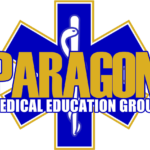Connecting Public-Private Sector Partnerships with Healthcare Ready
Podcast: Play in new window | Download
Subscribe: Apple Podcasts | RSS | More
 Tom Cotter, MPH, serves as executive director of Healthcare Ready, bringing more than a decade of global health readiness and response expertise to expand nonprofit’s mission-driven work addressing health equity.
Tom Cotter, MPH, serves as executive director of Healthcare Ready, bringing more than a decade of global health readiness and response expertise to expand nonprofit’s mission-driven work addressing health equity.
Healthcare Ready is a nonprofit organization established in 2007 to help strengthen the US healthcare system and assist all communities in planning for, responding to, and recovering from disasters and disease pandemics.
Tom brings his experience with international and domestic emergency response to the challenges of accessing needed supplies and resources during major incidents. Healthcare Ready acts as a bridge to forge public and private partnerships to get needed items to the responders and healthcare professionals who need them.
On the show in addition to our guest were co-hosts Sam Bradley and Jamie Davis.
Scroll down for Podcast Discussion Summary
 Thank you as always to Paragon Medical Education Group for their long-term support of the Disaster Podcast. Dr. Joe Holley and the team at Paragon continue to provide excellent and customized disaster response training to jurisdictions around the U.S. and internationally as well.
Thank you as always to Paragon Medical Education Group for their long-term support of the Disaster Podcast. Dr. Joe Holley and the team at Paragon continue to provide excellent and customized disaster response training to jurisdictions around the U.S. and internationally as well.
Podcast Discussion Summary
Improving Healthcare Response Amid Crises
In the meeting, Jamie Davis, the host of the podcast, introduced the topic of the day, which was about how to get things done in their jobs. He then brought in his co-host, Sam Bradley, who mentioned that there would be snow in the Front Range the next day. The meteorologists weren’t present during the recording, so they planned to catch up with them later in the week. Tom Cotter, the executive director of a nonprofit called Healthcare Ready, joined the conversation. He explained that his organization serves as a public-private partnership to avoid patient disruptions amid crisis by forging partnerships between the healthcare supply chain and government. Tom also shared his background in international and domestic emergency response work, including experiences with polio outbreaks and typhoons.
Healthcare Access During Disasters Discussed
Tom discussed the mission of his organization, Healthcare Ready, which aims to ensure good access to healthcare during disasters. He emphasized the importance of a needs-based approach, particularly for historically underserved communities. Tom also mentioned that the organization responds to non-traditional events, such as logistics strikes, which disproportionately affect certain communities. Sam and Jamie agreed with Tom’s points, highlighting the importance of empowering the healthcare workforce and connecting in times of need.
Improving Mental Health and Resilience
Jamie and Tom discussed the lessons learned from the pandemic and how they can be applied to improve mental health support and community resilience. Tom emphasized the need for increased funding in public health resilience and the importance of leveraging both communities and the private sector as a force multiplier. He also highlighted the need for a wider view of healthcare infrastructure, including not just hospitals but also urgent care centers. Tom mentioned that Healthcare Ready is training community health center workers to be more resilient during emergencies, with the goal of minimizing closure times and reducing financial strain on patients.
Improving Clinic and Pharmacy Resilience
Tom and Sam discussed strategies for improving clinic and pharmacy resilience, particularly in the face of disasters. Tom highlighted the challenges faced by smaller community pharmacies due to limited resources and the need to understand their networks for effective resiliency. He mentioned partnerships with organizations like the National Association of Chain Drugstores and the website RxOpen.org to help patients and healthcare providers navigate the status of pharmacies during disasters. Jamie raised concerns about public trust in health initiatives, questioning if healthcare is involved in efforts to rebuild this trust. Tom acknowledged the issue but did not provide a specific solution.
Community Leaders and Telehealth Impact
Tom emphasized the importance of community leaders in delivering messages and building trust, citing examples from international health spaces. He also highlighted the effectiveness of telehealth in reducing health disparities and improving access to healthcare, particularly in rural areas and during disasters. Jamie agreed with Tom’s points and suggested that Tom could be a guest on their show to discuss his work and partnerships further. Sam expressed appreciation for Tom’s insights and the potential for future discussions.


Recent Comments